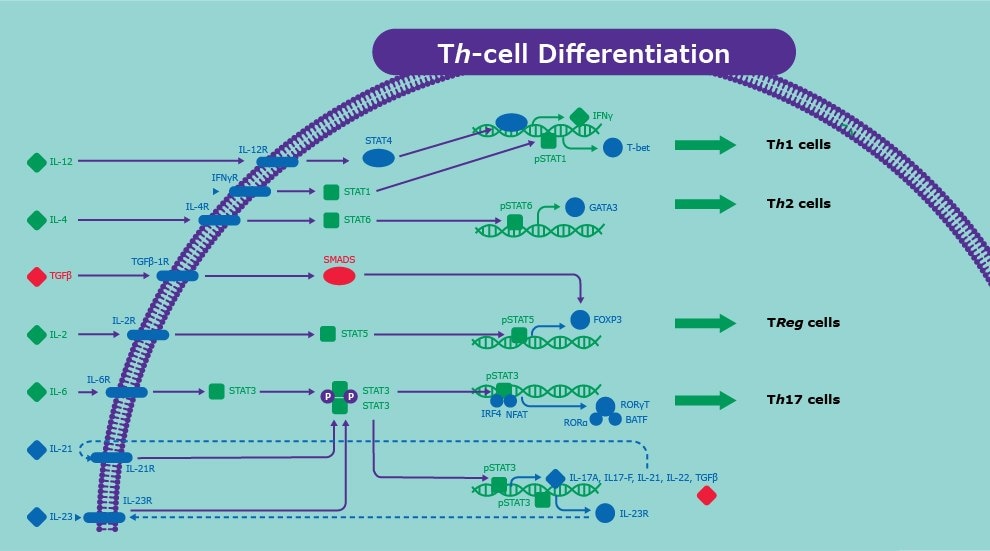Multiplexing Inflammation Signaling Pathways: Bridge the Gap Between Immunology and Cell Signaling
Section Overview
- T Cell Signaling
- Th Cell Differentiation and Signaling
- Inflammatory Response Signaling
- Sepsis Signaling
- Multiplexing the Inflammation Pathway
- Related Products
How do intracellular signaling networks regulate the development, maturation, and function of immune cells mediating the inflammatory responses that are linked to cardiovascular disease, cancer, neurodegeneration, obesity, diabetes, sepsis, and other disease states? Since no single biomarker can provide conclusive information on the role of inflammation in the initiation and progression of disease states, multiplex assays enable the measurement of multiple relevant circulating or intracellular biomarkers in a single, small sample. Read on to see how multiplexing the inflammation signaling pathway with inflammation assays and cell signaling assays can help researchers bridge the gap between immunology and cell signaling.
T Cell Signaling
Infection or invasion of pathogens such as bacteria activates macrophages which starts the signaling of T cells. When helper T cells (Th cells) become activated, they can go on to activate B cells which eventually stimulates antibody production (Figure 1).

Figure 1.T cell signaling after being activated by infection, including the inflammatory response with fibroblasts, endothelial cells, and more.
They also stimulate pathways of various cytokines such as IL-8, IL-6, TNFα, and RANTES, to activate neutrophils and other cells involved in inflammation and apoptosis (Table 1).

Figure 2.Signaling pathway involved in helper T cell (Th cell) differentiation into Th1, Th2, Treg, and Th17 cells.
The actions of these helper T cells are described in Table 2.

Figure 3.Cell signaling involved with the inflammatory response pathway.
Sepsis Signaling
Inflammation also relates to the sepsis pathway which is stimulated by increased IL-6, Lactotransferrin, MIF, MMP-8, Resistin, and C5a activation. Sepsis is a serious condition that involves hypotension and hypoxia. Neutrophil activation can eventually lead to tissue injury and multiple organ failure (Figure 4).

Figure 4.The sepsis signaling pathway including neutrophil activation, tissue injury, multiple organ failure, and more.
Multiplexing the Inflammation Pathway
Multiplexing allows researchers to look at all parts of the inflammation pathway while saving time and precious samples. With numerous biomarkers to measure, multiplex assays can bridge the gap between the immunology and cell signaling parts of the inflammation pathway. For example, our MILLIPLEX® multiplex panels offer an extensive list of multiplex inflammation assays and cell signaling assays that can investigate various aspects of inflammation signaling.
Related Products
Explore our MILLIPLEX® multiplex inflammation assays and cell signaling assays that can analyze the inflammation signaling pathway.
Cytokine Analysis
Th17 Cell Analysis
CD8+ Cell Analysis
Sepsis Analysis
TGFβ Analysis
STAT Phosphoprotein Analysis
NFκB Pathway Analysis
Multi-Pathway Analysis
Apoptosis Analysis
For Research Use Only. Not For Use In Diagnostic Procedures.
To continue reading please sign in or create an account.
Don't Have An Account?